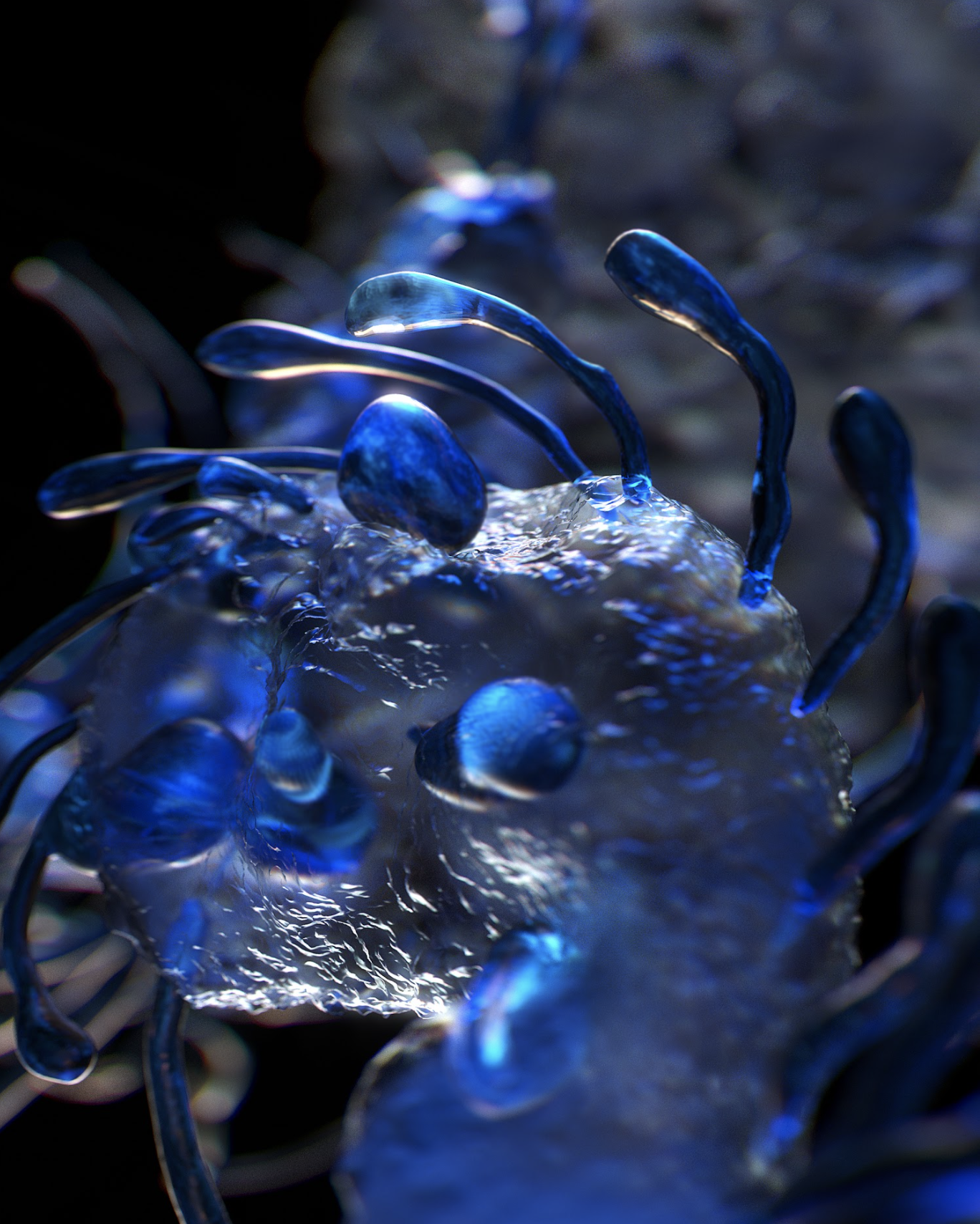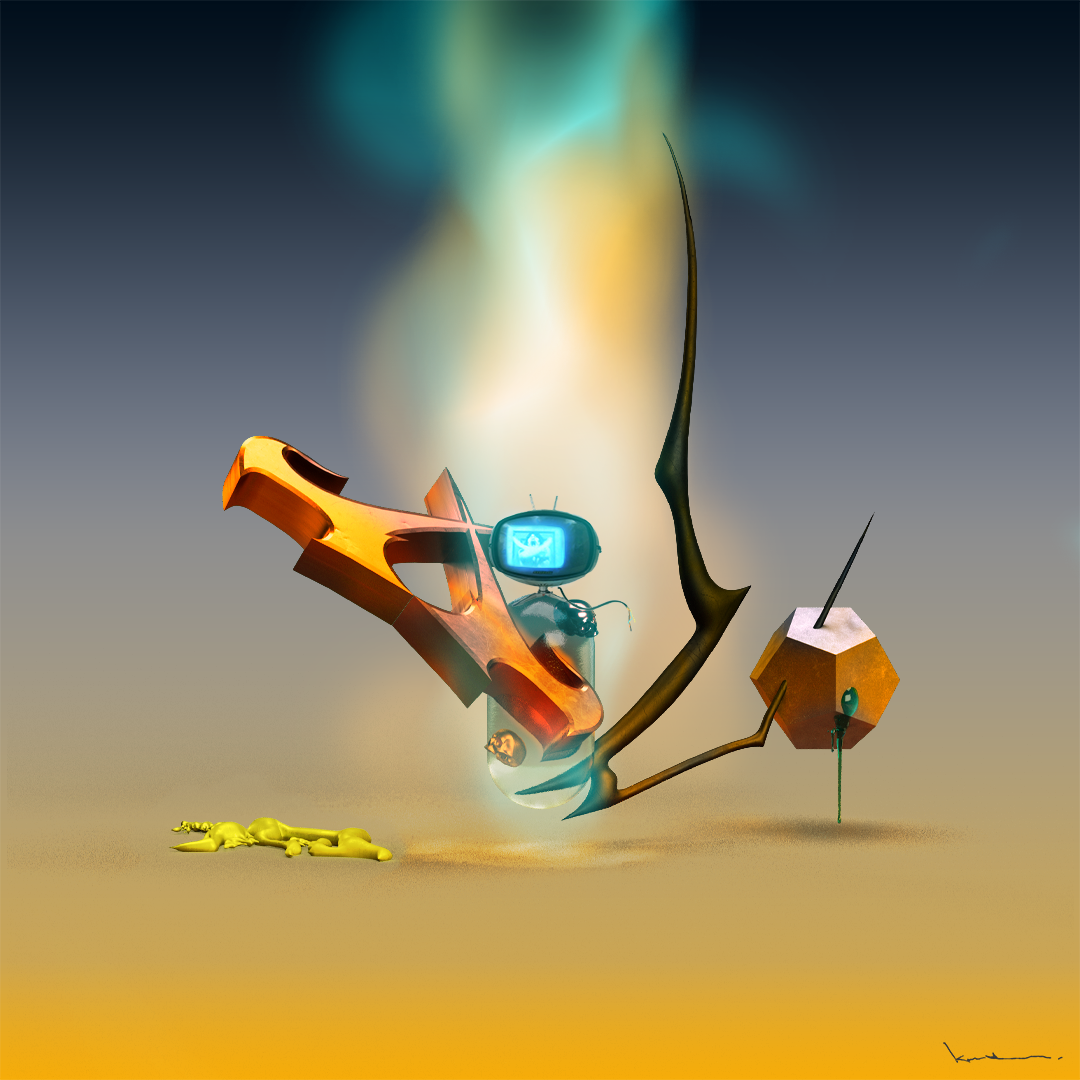Becka Saville, Cvalda Xie, Gastt, Software 2050, Kazuhiro Aihara, Polina Zinziver, Sargon Khinoev, Markus S Fiedler & Studio RFS
NFT / Art / Design / Culture
New NFT Marketplace "Reloaded" curated by TUNICA has brought together a group of selected artists to talk about NFT, the Metaverse, cryptocurrency, and their practice of work.
Featuring: Becka Saville, Cvalda Xie, Gastt, Software 2050, Kazuhiro Aihara, Polina Zinziver, Sargon Khinoev, Markus S Fiedler & Studio RFS.
Vol.01
Describe NFT market in one sentence:
@cvaldaxie: It redefines the value of digital art.
@gastt_fashion: The NFT marketplace is beset by growing pains but has potential.
Han-Yu Feng/@software2050: Dazzling and elusive.
Kazuhiro Aihara/@shuntoheyog: It is the future of digital creative and it is another planet.
@polina_zinziver_: Hectic, ecologically confusing, economically empowering.
Sargon Khinoev/@ssssskkkkkddddd: The Mutating Anthropocene Market.
Studio RFS /@miu_dyyed.spell: The discussion about it not being clever to copy someone else's intellectual property came back.

Artwork by Kazuhiro Aihara
What would you say is the most important influence NFTs have on the art world and culture?
@becksaville: The amazing community that it’s created, it’s a movement. I honestly haven’t experienced anything like it. The way people are sharing work, discussing things daily. NFTs are giving creatives value that they might have not had access to prior, less gatekeeping and open to all and allows creatives to have control. It changes the whole economy, it provides creatives a way to sell their work who previously haven’t been able to, especially digital art. NFTs are definitely here to stay and the art world is having to play catch up.
@cvaldaxie: In the past, artists paid plenty of time and effort on their work with few income. However with the appearance of NFT, the value of digital art was revealed on the market and let the public know the real value of it is far more than it shows on the Internet. In the meantime, artists could earn more than before, not just display work somewhere without income. Therefore, it gives a potential platform for digital artists to survive.
@gastt_fashion: NFTs have the potential to disrupt the traditional system of the art world. For example, the NFT Marketplace enables artists to bypass the auction houses that take a cut from the sales of their artwork. Additionally, the possibility for artists to earn money from future resales of their artwork is a promising step in the right direction.
@shuntoheyog: By a big definition, I agree with a decentralized economy. I've been in the world of graphic design or digital art for over a decade, and when I think about my style, it's been very stuffy. In short, my underlying desire is not in the act of designing for the client, but in the self-expression using digital tools. In that respect, the NFT seems to have reaffirmed my mission and goals. There is no doubt that it has a great impact on the future of digital and visual artists around the world. We consider NFTs to be another planet, a great platform that combines the income systems of digital artists with freedom of expression.
@polina_zinziver_: Discussions on how to collect digital art have been going on for years, now it has been realized with the help of NFT, further introducing digital art into museum and art discourse.
@ssssskkkkkddddd: I kind of like the fact that everything happens anonymously, that for example you don't have to face the routine that happens in the offline art market, you don't have to shine everywhere and show yourself off. The NFT concept of the marketplace is very appealing.
Artwork by Sargon Khinoev
How has NFTs influenced your practice, if at all? Do you have any upcoming drops?
@becksaville: I wouldn’t say it’s influenced the way I make art but it has definitely given back my spark and interest in making art. Before I was making art to share predominantly on Instagram and pieces would just sit there on a shelf. It has literally lit a fire in me creatively, it's exciting that digital art has been given value that it's never seen before. It’s been amazing to see artists, photographers, poets, musicians get the recognition they deserve and people seeing value in it. It’s great to gain relationships with other artists and collectors globally and they can be part of my journey as an artist. I’ve just dropped a couple of new pieces, one is called “Stargazer Lily” which is an ode to the flowers I’ve been getting since lockdown that have been lifting my mood. I’m interested in how color can uplift how you feel in your environment.
@cvaldaxie: I haven’t uploaded my work on a NFT marketplace yet. But I think I will do so in the future after creating more exciting new work.
@software2050: Yes. I'm planning a series of creations related to Sci-fi-Folklore and the evolution of divination. The narrative revolves around a lonely artificial intelligence in 2050.
@shuntoheyog: I have been influenced by NFT so much. The styles of many artists, the trends of collectors, the philosophy of blockchain, etc. all influence me. Most of my current productions are experiments and achievements for NFTs. I entered the crypto world in earnest in March 2021. Only a few months have passed at this point, but I will never forget the revolutionary events that happened in my brain when I first learned of the existence of NFTs. I plan to drop some. There are so many things in the works, such as updating my past works and expressing the current position of my art.
@polina_zinziver_: I haven't participated in the NFt market yet, but I am working on a collection of drops. Although I feel like the NFT market has definitely already formed its own rules, and so far they are closer to the rules of the commercial market than the art world. And the question is do i want to follow these rules.
@ssssskkkkkddddd: Everything was very funny. i got an invite from my friend and everything was like a lottery and very unstable, but i decided to play this lottery and it was very nice to win and i sold 2 works. Yes I am thinking about the collaboration. It should come out soon.
@miu_dyyed.spell: When I think about a new drop, I think about putting energy into my work to create and more energy to minted so that my work really has a message and I stand by the fact that it is unique and I want to protect it and pass it on knowing that it will stay that way. I also make artwork that I want to have a life of its own on the internet and I think it's great to see it integrated into someone else's work, but with NFT I want to know that it has fulfilled its rare purpose.

Artwork by Studio RFS
What advice would you give to artists who want to be involved in the NFT community?
@becksaville: Take your time, don’t feel like you have to rush into it. Join a discord channel and absorb all the information and ask questions, form relationships first. Work on creating amazing art that you’re super happy with before minting your genesis piece and patience is key. Play the long game.
@cvaldaxie: Choose the best minting platform for yourself and your work. Read the guide carefully and avoid some troubles. Express your authentication and protect your copyright.
@gastt_fashion: Conduct your own independent research on the topic. Consider all of the different perspectives. Weigh the pros and cons. Be realistic!
@shuntoheyog: First of all, I think you need to join the NFT community on Twitter. I have built an SNS career centered on Instagram. Unfortunately, Twitter remained almost untouched. By entering the world of NFT and studying the world every day, I learned the effectiveness and importance of Twitter. The ability to communicate on Twitter is currently indispensable for selling NFTs and spreading their work in the crypto world. And most importantly, I think it's true to my art and expression. In short, the current flood of NFT news focuses only on the very economic side. If you think that NFTs can make money, you lose your philosophy, thought, and even motivation for art. I think it's important to always think about what context you are involved in in the world of digital art, express it, and give back to the community in some way. In that sense as well, there is always a lot of debate and admiration on Twitter, from which we can unravel the context and present of digital art.
@ssssskkkkkddddd: I would say communication with the community and of course social media such as Instagram and Twitter, where you can not only find buyers, but also get to know and meet artists like you, maybe even propose a collaboration. But you shouldn't panic and write to everyone in a row just to sell. Enjoy the process.
@miu_dyed.spell: Digital art is still art, so it should be created because you personally want to create something that you think has an underlying meaning that needs to be told.
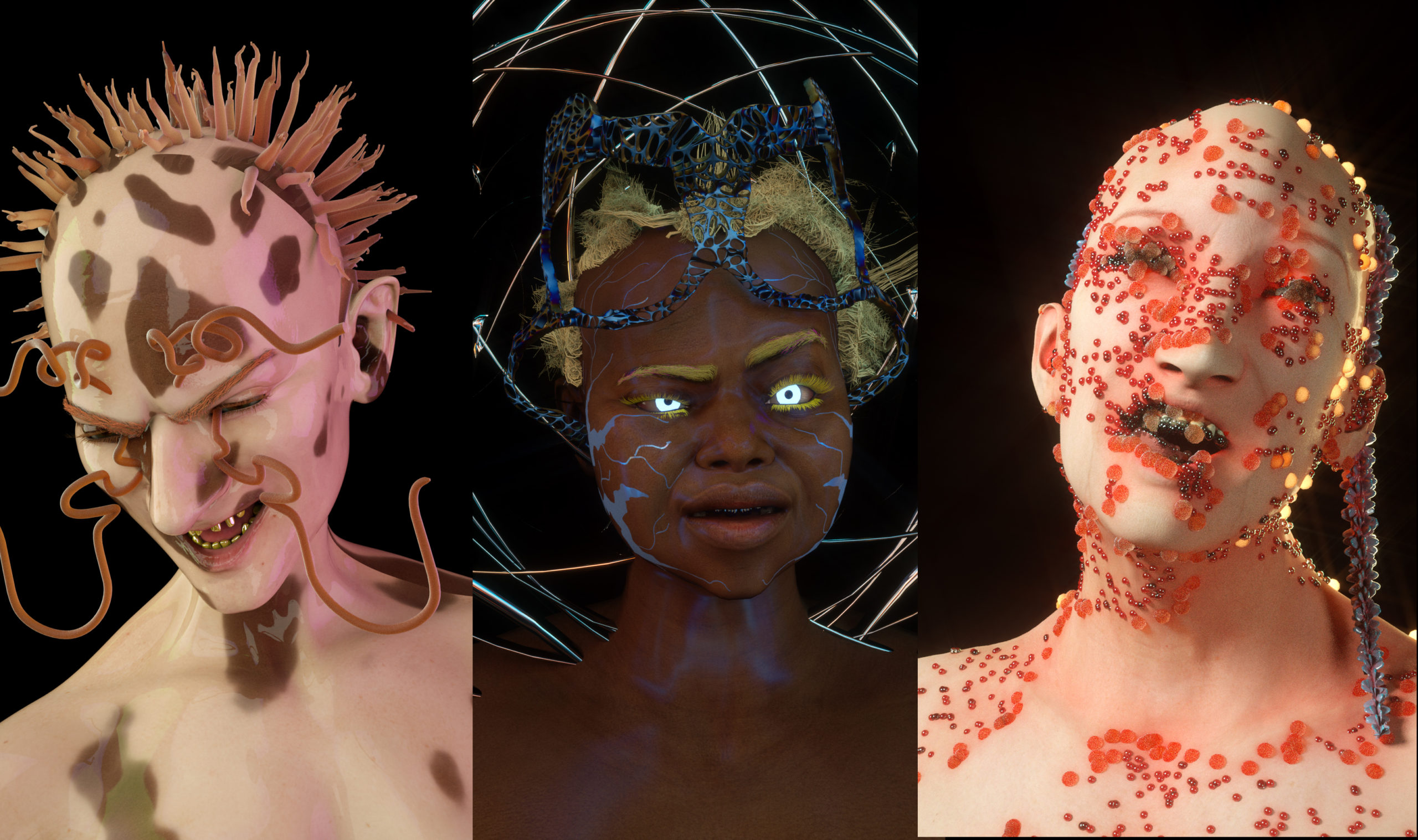
Artwork by Polina Zinziver
Where do you think NFT and marketplaces will be relevant and how, not only in the art world but in music, fashion?
@cvaldaxie: NFT will inevitably be relevant in fashion. Luxury brands could release digital collections linked to virtual experiences, such as games or wearing virtual garments for internet appearances.
@gastt_fashion: Perhaps we will fully revert to a cultural economy of patronage?
@software2050: In recent years, there have been extensive discussions on how streaming music platforms can deprive artists of their creative income. I think NFT may be one of the solutions. Especially under the severe epidemic, music creators are actively seeking new sources of income. The difficulty of making NFTs is not really high. This is a good opportunity for producers who know how to create fame through online media. Through the blockchain, artists can better control the sales of their works. However, the NFT market is still largely based on the operation of scarcity and popularity. For new creators who have not yet established a reputation, I think it is still a considerable challenge. On the other hand, the fashion industry is very familiar with scarcity and topical operations. In recent years, the exploration of virtual idols, virtual models, and virtual goods has also been vigorous. Therefore, the combination of the fashion industry and NFT should be natural. For young people who grow up on the Internet, as long as there is a platform that can be displayed, virtual objects are as real as physical objects.
@polina_zinziver_: NFT is a great tool for decentralised economy and supporting artists in different spheres. Using the NFT eco-friendly platform, the market could become the main place to work with representatives of creative industries
@ssssskkkkkddddd: Yes, it is a matter of time, it seems to me that both the NFT itself and its exchange rate will rise and fall to a certain point. As I think, it is a good and smooth change of people's consciousness that there is another way to pay.
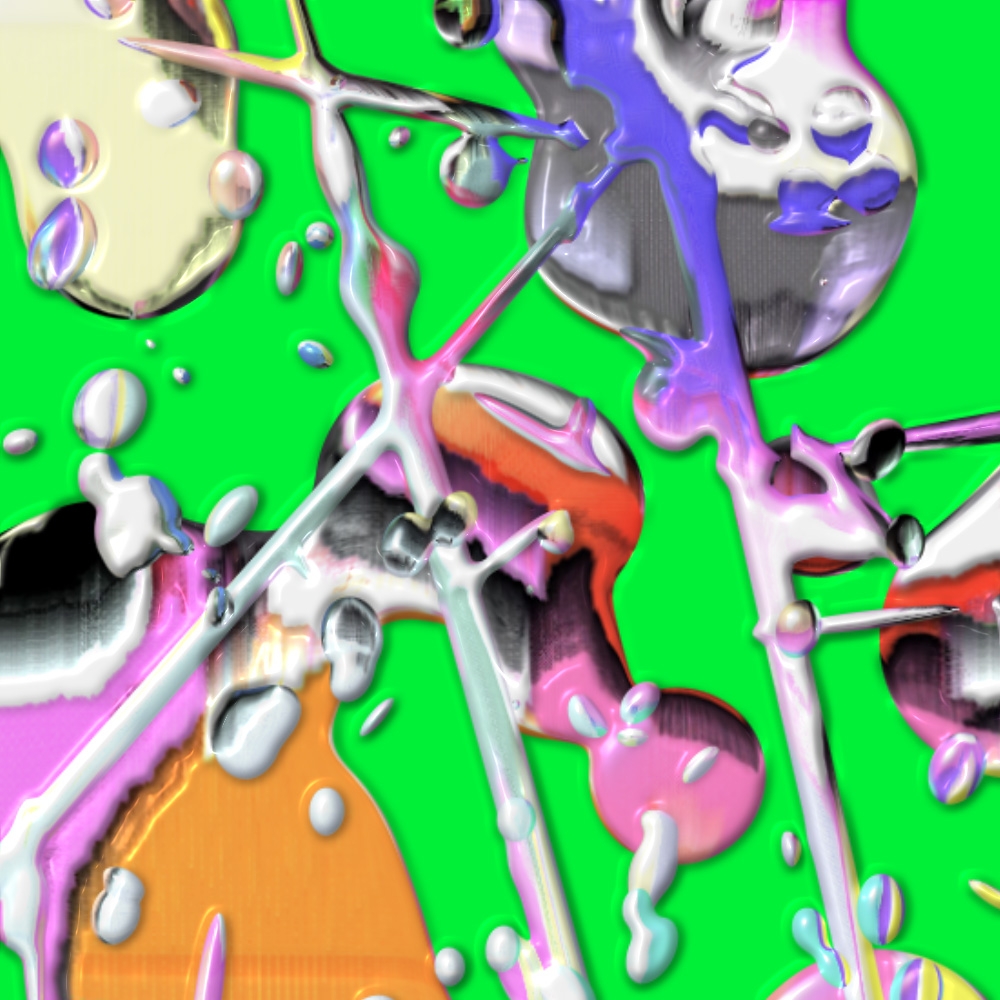
Artwork by Becka Saville
Have you bought/collected an NFT already from other Artists/Marketplaces? If so, could you please describe them and why?
@becksaville: I’ve collected around 50 so far from a range of platforms such as Foundation, Hic et nunc and rarible. Artists such as Katie Torn, Yoshi Sodeoka, Andrew Benson, p1xelfool, LIŔONA, Joe Horner, bktr.io and more. I’m obsessed with colourful and playful pieces and it’s as much a thrill to collect as it is to create I tell you. I can spend hours looking at everyone's amazing work.
@shuntoheyog: I have collected some NFTs. Not many. We will continue to collect it. The reason I collect it is, of course, because I love the NFT. At the same time, I want to contribute to the prosperity of the blockchain and the manifestation of intention to give back to the NFT community. In fact, I'm still a beginner in the NFT / Crypto World. I have to thoroughly study whether my own work can exist in the NFT market. We still need to learn more.
@miu_dyed.spell: Yes, I had the privilege of purchasing the NFT. I was thinking about how to support artists during the pandemic, so when I discovered an online exhibition that focused on young digital artists, I supported them. I'm not collecting anything in particular, it must be love at first sight. I've got my eye on a piece by artist Johana Kroft now and we'll see when it comes to me.

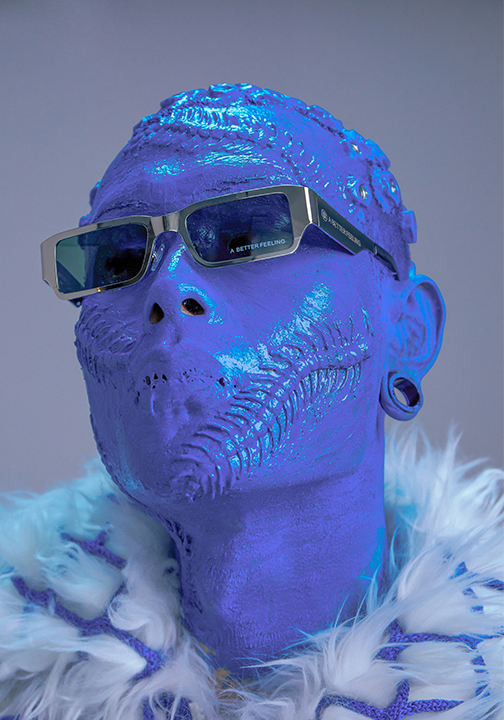
Artworks by Cvalda Xie
How can we as artists and collectors act more responsible and contribute to energy-efficient initiatives and solutions in relation to blockchain technology?
@cvaldaxie: Use sidechain technology.
@software2050: For me, the most basic thing I can do is to continue to pay attention to how various blockchain technologies react and make changes when faced with energy or other issues. And then try to support the right platform. (at least don't be too ignorant about these issues.)
@shuntoheyog: Currently, I will not be directly involved in the blockchain technology system. However, as an NFT artist, I'm always thinking about energy efficiency and other things, and how I should be involved in the NFT market. My NFT was ETH at the beginning, but now I mainly use blockchain using Tezos. The development of technology related to NFT is extremely fast. We hope that the current CO2 and various problems will be resolved quickly and that we will make progress in a better direction.
@polina_zinziver_: As artists we can choose sustainable NFT platforms and for sure choose carefully what we are going to mint and give it a thought and put all our heart into our creations.
@miu_dyed.spell: I believe in a more sustainable future for NFTs, we need to figure out how we can build new platforms that are sustainable. There are options. Ethereum's developers have planned a transition to a less carbon-intensive form of security, called proof-of-stake, through a plan called Ethereum 2.0. However, this plan has been in the works for several years and the date for the transition is not clearly defined. There are other alternative blockchains, some of which already use proof-of-stake, but are perceived as less established, but this may change in the future. Unfortunately, this currently makes them less attractive to art buyers who want to have their claims for very expensive works. Those who are interested in sustainability in general know that there is a long road to sustainability that is paved with capitalism. It is up to each of us to realize how much we want to own and what pleasure it brings us. I like the model of buying NFT as if it were a real work of art. How many paintings can fit in my room and do I want to keep them there for years?
Artwork by Kazuhiro Aihara
What does it take to actually shake up the established art authority structures?
@gastt_fashion: Threaten the bottom line of those in power.
@shuntoheyog: This is a very exciting question. It is difficult for me to answer the current situation. However, I think it is true that fields such as digital art have set new pillars in the established art industry. NFT has greatly expanded the field of contemporary art. No, it may be bigger. NFT has created another new field of contemporary art. From this point of view, the existing art authority must now be shaken from the ground up.
@ssssskkkkkddddd: The way I see it, the NFT has already shaken things up.
@miu_dyed.spell: Traditional galleries were not prepared for such a rapid rise of NFT platforms taking the helm. I imagine that many established galleries are now experiencing FOMO, hence why NFTs like David Hockney's and artists we generally know from museums are now more confident with entering the market. The idea of galleries being the arbiter for the value of the work they are now losing in the digital art sector makes them think about opening their own marketspaces and presenting their work in an online exhibition, selling limited editions of their pieces. It is a middle ground between NFT platform and gallery, adopting the technology and economics of the former and the rigor of the latter. Also auction houses aren’t set up to handle the technical aspects of NFT sales themselves, such as making the token on a blockchain and transferring it to the buyer’s crypto wallet after the auction. Christie’s, for example, collaborated with MakersPlace when it sold Beeple’s work.
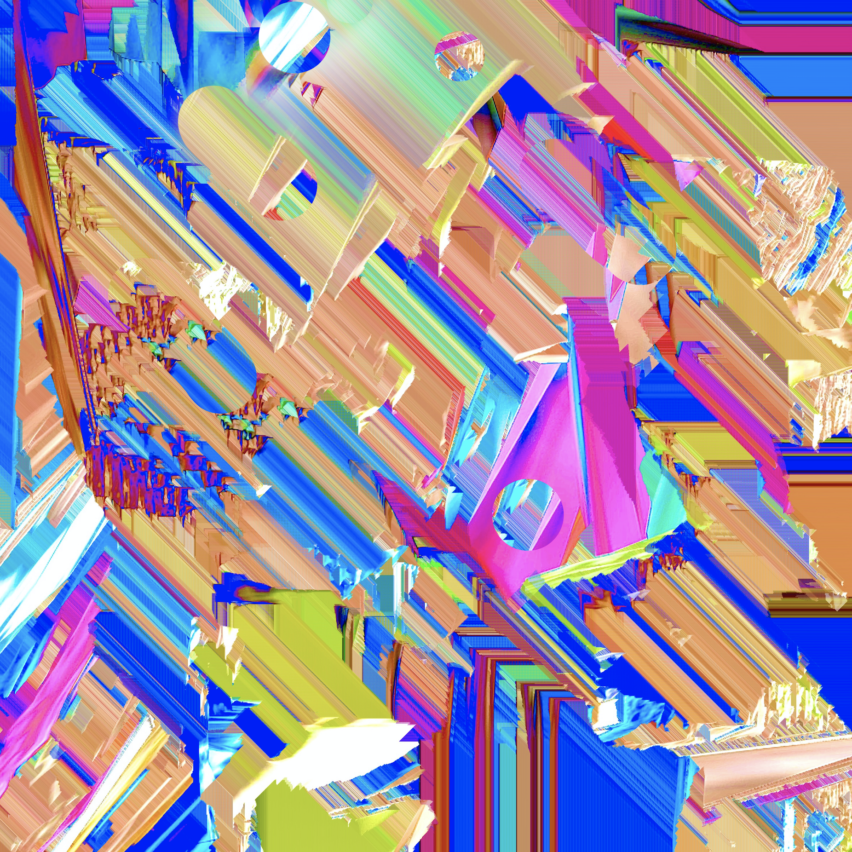
Artwork by Becka Saville
Cryptocurrency is becoming more and more ubiquitous, do you see yourself implementing it in your daily life?
@becksaville: 100% yes to this. Waiting for the day I can do my weekly grocery shop with crypto.
@polina_zinziver_: Definitely yes, in about 5 years from now.
@ssssskkkkkddddd: At some point we will go completely digital, but for now it's just small steps.
@miu_dyed.spell: I don't see anything. Considering that I live in a state where you can only pay with cryptocurrency in two coffee shops and the only article that resonated in society after Elon Musk's statement was the unsustainability of the current blockchain, but only because people had fun with the fact that the currency went down so drastically so I haven't noticed any changes.
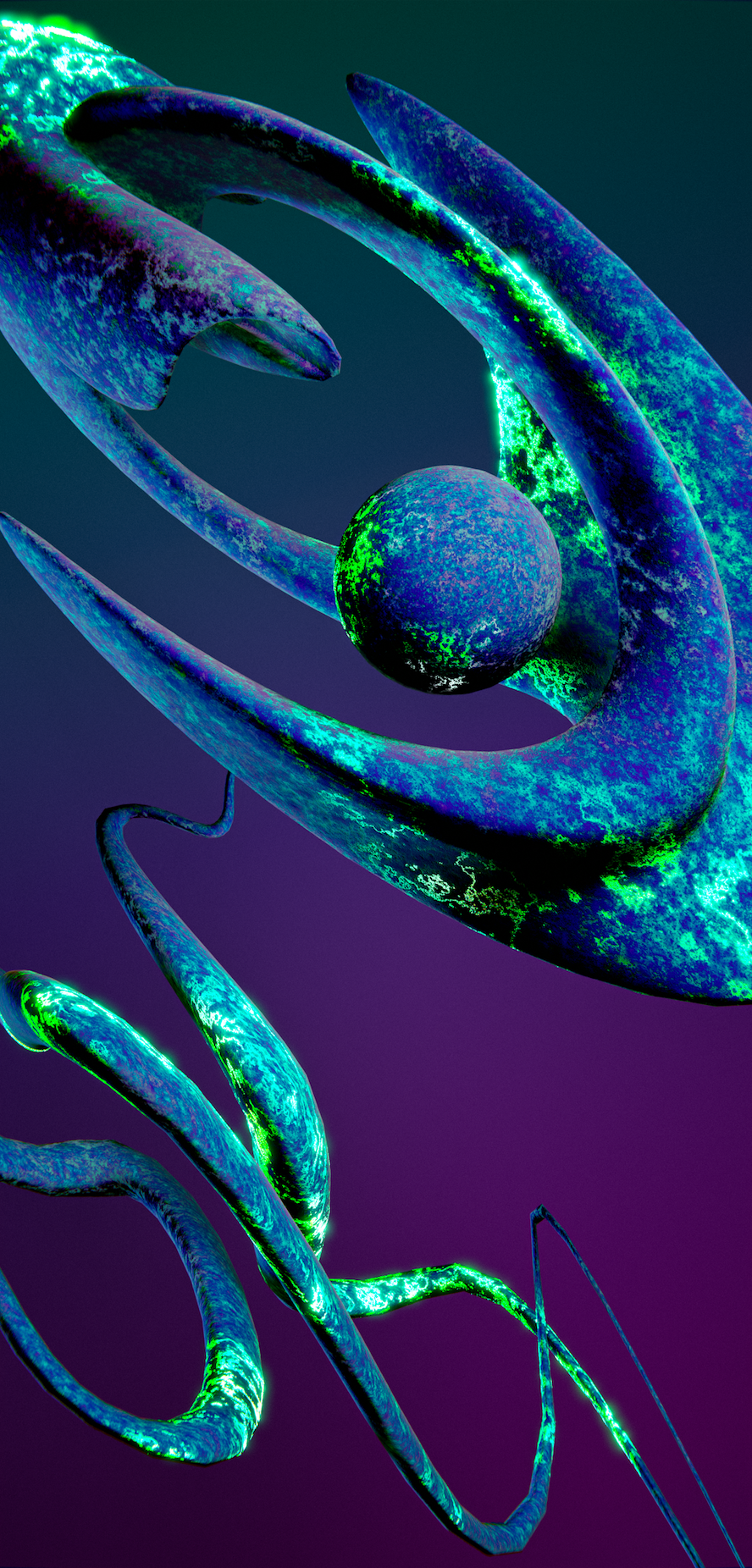
Artwork by TUNICA
The El Salvador nation has recently adopted cryptocurrency as a legal tender, the government will allow its people to pay taxes with Bitcoin, China instead did quite the opposite, thoughts?
@cvaldaxie: It is hard to control cryptocurrency activity in China and the cryptocurrency policy still has lots of flaws. And the other thing is the government is concerned about threats to the national currency—RMB. To some degree, that makes sense. However, China is still the biggest owner of the mining department. So I don’t think the current decision means forever.
@polina_zinziver_: Closed, totalitarian and dictatorial countries like China or, for example, Russia and Belarus will resist innovations and decentralized instruments that cannot be controlled to the last. Especially considering the recent alarming events, where, as can be seen, the consolidation and strengthening of the regime is taking place, the cryptocurrency can be seen by totalitarian governments and dictators as a tool for the revolution, which is exactly what it is.
@miu_dyed.spell: It will definitely be interesting to watch the development in time, but for now, anything that helps their economy is for the better, and if it is Bitcoin, so be it.
Artwork by Markus S Fiedler
Did you grow up appreciative of art? And digital art?
@becksaville: Yes, I always knew since I was a little kid that I wanted to do something creative in art. I always enjoyed going to galleries of course, I miss going to them IRL but it’s been great visiting digital ones.
@gastt_fashion: I definitely grew up with an appreciation for art, even though I certainly wasn't immersed in the "art world". As a young child, I was exposed to the then-ubiquitous Y2K Aesthetic in digital art and was very much drawn to it. It seemed alienesque and otherworldly, yet still inviting. In retrospect a lot of it was quite crude, but still charming.
@software2050: I have liked all kinds of weird things in the world since I was a kid, so I think yes to some extent.
@shuntoheyog: No. My parents were both elementary and junior high school teachers and neither of them grew up in the arts. However, I think I grew up listening to a lot of music from a young age. At the same time jacket artwork for old records, cassette tapes, CDs, etc. are the origin of my art. I have never attended an art school. All was self-taught.
@polina_zinziver_: Yes. I grew up in Saint-Petersburg, where we have one of the biggest thumb of art in Europe and Russia - the Hermitage. As for media art, it came to Russia with a delay but was love at first sight.
@ssssskkkkkddddd: I went to the film academy, then changed my specialization to Art/Electronic Art. I always enjoyed socializing and finding soulmates while I was studying. Sometimes it was very difficult, but with the internet and platforms it's getting easier.
@markusxfiedler: Growing up on a steady diet of cartoons and church services. People like Chuck Jones and Jesus Christ introduced me to some wonderful art at a very tender age. From then on the playing-field just grew wider and wilder.
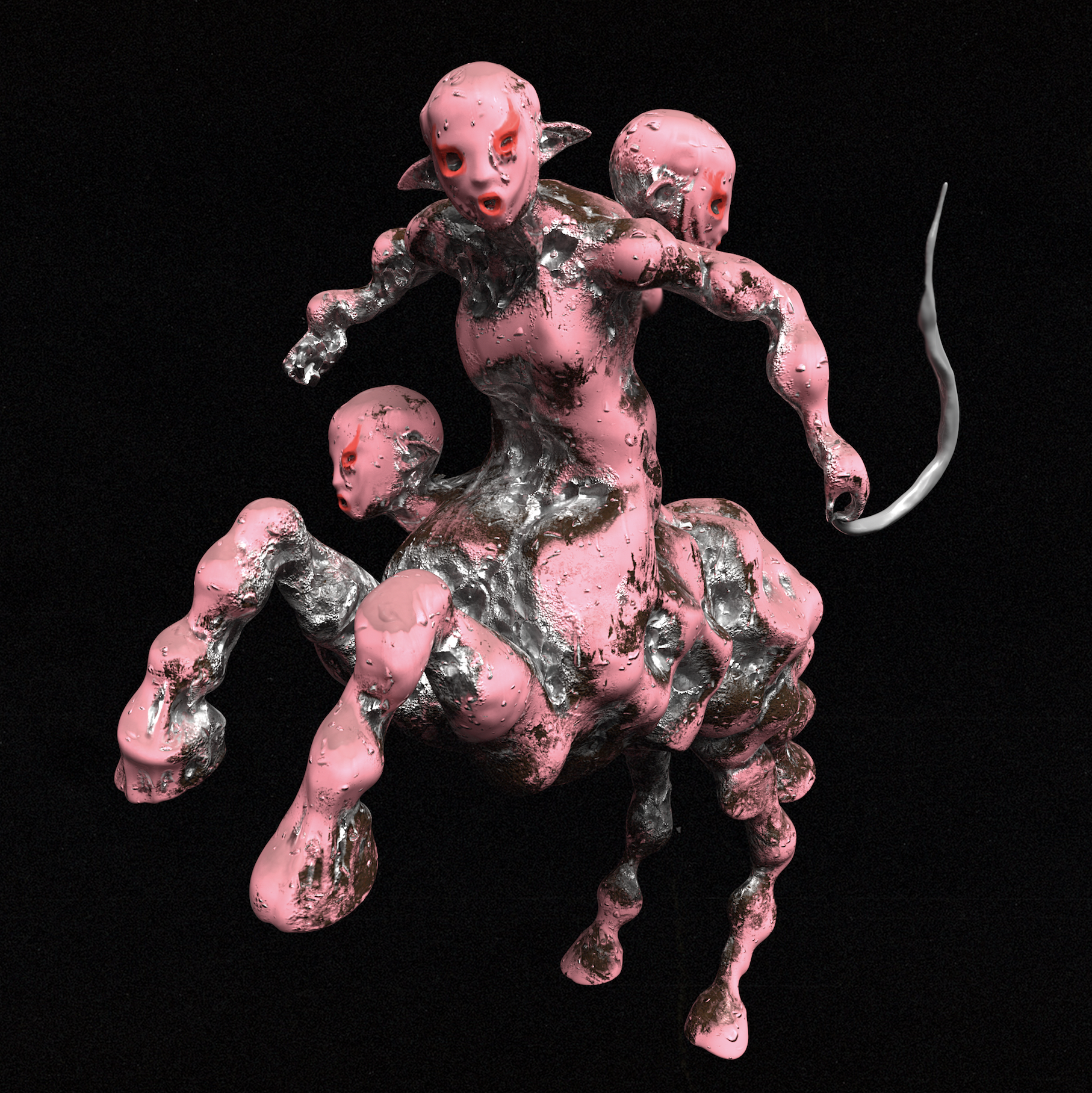
Artwork by Sargon Khinoev
How did you start working in your industry?
@becksaville: My first step into the design industry was a summer internship at British Vogue whilst studying Graphic Design at Manchester School of Art, that focused on creating digital publications which was an amazing experience and learnt a lot. A week after I graduated, I did another internship at Esquire magazine and stayed as a freelancer and then did a couple years at WGSN trend forecasting agency which was super interesting learning about future trends and consumer insights. Now I’m nearly 5 years at ViacomCBS, currently a senior designer working on multi-platform projects with brands such as MTV and Comedy Central.
@cvaldaxie: I studied in London for 2 years and graduated with a MA in Fashion Communication and Promotion- Fashion Image at Central Saint Martins. During this period, I created lots of digital works and built relationships with people in this industry. After I graduated, I worked as a freelance stylist and art director in Shanghai. So CSM is an important bridge which linked me to the fashion industry.
@gastt_fashion: I started experimenting with 3D modeling as a teenager, and developed an interest in video game world builder / level editor tools. It was kind of an intense obsession, so I let it slip away for a few years. However, in the months leading up to (and during) the pandemic, I felt compelled to take it up again. I started working on my own personal projects and incorporating 3D modeling into them. I began posting the results online, and eventually, I started taking on freelance assignments.
@software2050: I originally studied graphic design. When I was a student, my friends and I founded an art collective (NAXS Corp). We frequently participated in parties and electronic music scenes, and started experimenting with digital installations and new media performances. Since then, we have continued to create digital art to this day.
@shuntoheyog: I think the oldest memory is an important starting point. I think it was my dad's word processor and some software for Windows 97. I think there are many creators who are indulging in it if they can go back to that time and sit at their desks. Later, I started working on flyers for the club scene. The first clients were my friend's dancehall reggae crew. So I was studying “Bling Bling” using Photoshop day and night. It's a good memory. It's incredible to think that I'm still training myself when it comes to Photoshop effects.
@polina_zinziver_: YouTube tutorials :)
@ssssskkkkkddddd: I get orders from my so-called online instagram community. It was pretty easy because your gallery with your work is on the platforms and everyone can see it.
@markusxfiedler: I was doing things and through connections those things turned into jobs.
@miu_dyed.spell: I started as a painter, but after a few years, I realized that I was desperately missing some movement in my production, so I began to work on exploring a moving image. I learned the film structure, camera rules, editing techniques, and I played with different types of light and gradually I started with animation. In the end, the circle closed again and at the moment I am mainly dealing with static images that I create in programs. Now my research focuses more on the composition of the image and the calming of all the elements. I feel more connected with all the processes when using digital media, for me the computer is more of a tool than an object. I think I was mainly influenced a few years ago, around 2016, I started working on my glitch film, which used the datamoshing technique which can be broadly defined as art created by corrupting or, otherwise, manipulating an existing file — that has roots in the net art movement of the early aughts. First I shot everything on an old Sony camera, and then in post-production I deleted data from various frames. I really enjoyed this kind of creative process. It was at that time that I became interested in technology and how an image can be degraded, reshaped and all with the help of a computer.
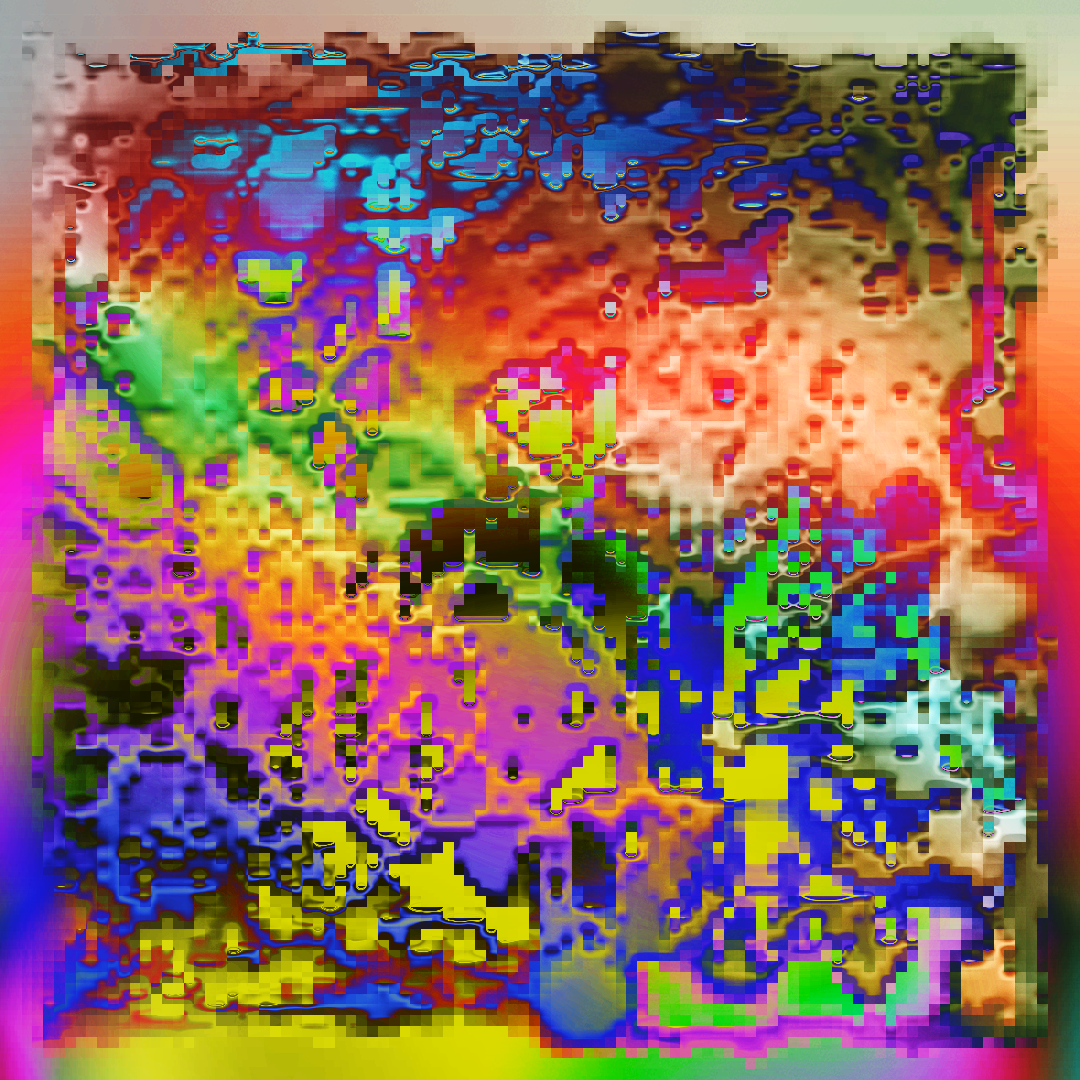
Artwork: Kazuhiro Aihara
Can you describe your work? (Do you have a routine, follow your intuition, etc.)
@cvaldaxie: In my idea, styling and creative direction is a way to interpret a story from your life or observation. So these two positions can give me the chance to explain my own insights of fashion. Usually when I was working on a shoot, it took me a long time to prepare for it. I spend plenty of time on research. I used diverse research method to develop a concept—find a noun of the theme of my project—deconstruct the noun—find the cause and effect —explore the relationship between this object and history, contemporary society or future life—other artists experiments— interview— questionnaire —narrow the theme— confirm the theme … In terms of set design and makeup, mostly inspired from some architecture, sculpture, unique texture of creatures, or folklores, tribe or religious convention, etc. Most of my concepts are inspired by some news, a happening issue, technology, or the environment.
@gastt_fashion: When starting personal projects, I usually have a concept in my head. Initially, I will recreate the concept I have in its simplest form. Then, I will start to experiment and will manipulate the object / 3D scene in every way possible. This process of experimentation will frequently lead me in interesting directions that I might not have thought to go, and allows me to really appreciate the joyful spontaneity of creation (please excuse the earnestness!). I will build on my initial idea, and then refine it until I feel like it is finished.
@software2050: From the perspective of visual creation, for a long time in the past, I relied on intuition to create and searched for the meaning of the work in the process of creation. But as the complexity of the work increases, I find that intuitive creation often encounters many technical obstacles and disrupts the flow of intuition. Now I am more and more inclined to create through data research, conceptual construction and story text. On the other hand, I am more able to use my sensory intuition when composing music, explore it with the current state of mind, and then enjoy it.
@polina_zinziver_:Most of the time it comes from a well-thought-out idea and developed concept, but since I got a new toy — a VR headset, I started trying a subconscious and expressive approach to modeling and creating 3D compositions, with music involved here and now.
@ssssskkkkkddddd:Yes it's always an interesting process and I always want to remember what music or what I did before I started doing this or that piece. Now I started to write down and take notes in order to understand what external factors and most importantly how they affect me.
@markusxfiedler: Put chance, failure and anything you didn't expect in a bowl with some rather blurry vision of what one actually wants (shouldn't be too precise). Stir carefully, play with it a good bit, let sit for a while. Continue.
@miu_dyed.spell: My work often has headings and a clear theme, it's something left over from my studies at the art academy, where it was always essential to have a concept and to get enough literature on the subject to know what the result should be. It generally takes me a long time to get a new piece under my hands because I'm very focused on the meaning and the final message. I often live with my projects for several months, so I am naturally deeply immersed in the subject matter and the visuals and ideas often come to life. However, I don't create a complex world that follows me around every corner, my world is more about approach to work and creativity.
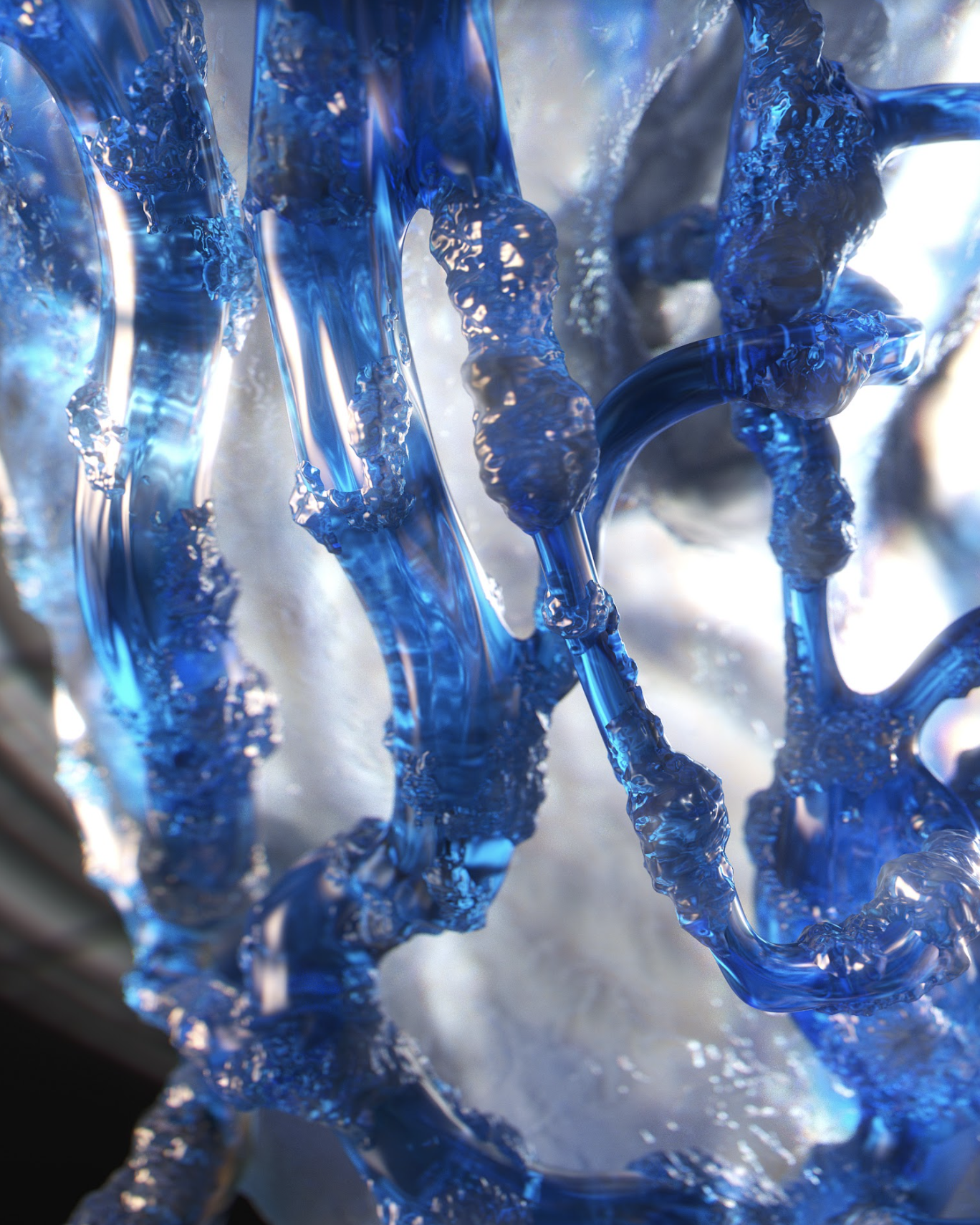
Artwork by Sargon Khinoev
Share with us some of your current inspirations and references.
@becksaville: I’ve always been fascinated by digital art since the days of net art, so it's been amazing to see artists like Nicolas Sassoon and Sara Ludy work in the Metaverse.
@gastt_fashion: I'm really inspired by a lot of Celtic / Insular art, and how well its aesthetic lends itself to 3D and digital art (in my opinion). I think there are so many interesting ideas left unexplored, and now we have access to relatively advanced tools to execute these ideas in ways that the Celts or Columban Monks could not. I feel like the Celts and Columban Monks could do insane things with a Cinema 4D crack. I'm also really inspired by video game concept art, particularly from the mid '90s to the early 2000s. There is some extremely weird Tomb Raider / Lara Croft promotional imagery from the late '90s that might actually be transcendent and deeply affecting art (I haven't decided yet).
@software2050: I collected a large number of pictures and memes related to animals, technology, subculture, or ancient civilization from the Internet. The Instagram account "寂寞Software2050" I manage is where I organize my inspiration.
@polina_zinziver_: I am currently getting my inspiration in Russian and Byzantine icons, biblical scenes from the Renaissance, reading the Bible and Lao Tzu, diving into quantum physics and Karen Barad's theories.
@miu_dyed.spell: I'm re-watching all the Jurassic Park episodes right now because I wanted to get more in tune with the prehistoric world. The catchphrase from the first episode has haunted me for days. "You Didn't Ask For Reality; You Asked For More Teeth!" Otherwise, I recommend almost all of Timothy Morton's essays, artists who have multiple layers in their work like the painter Toyen, and music that energizes. Please go outside, there's a world out there.
@markusxfiedler: Fallen-over tree-roots that become biotopes for all sorts of plants and funghi and little creatures. Prince & Diana Ross outfits.
Interview by Therese Nguyen
